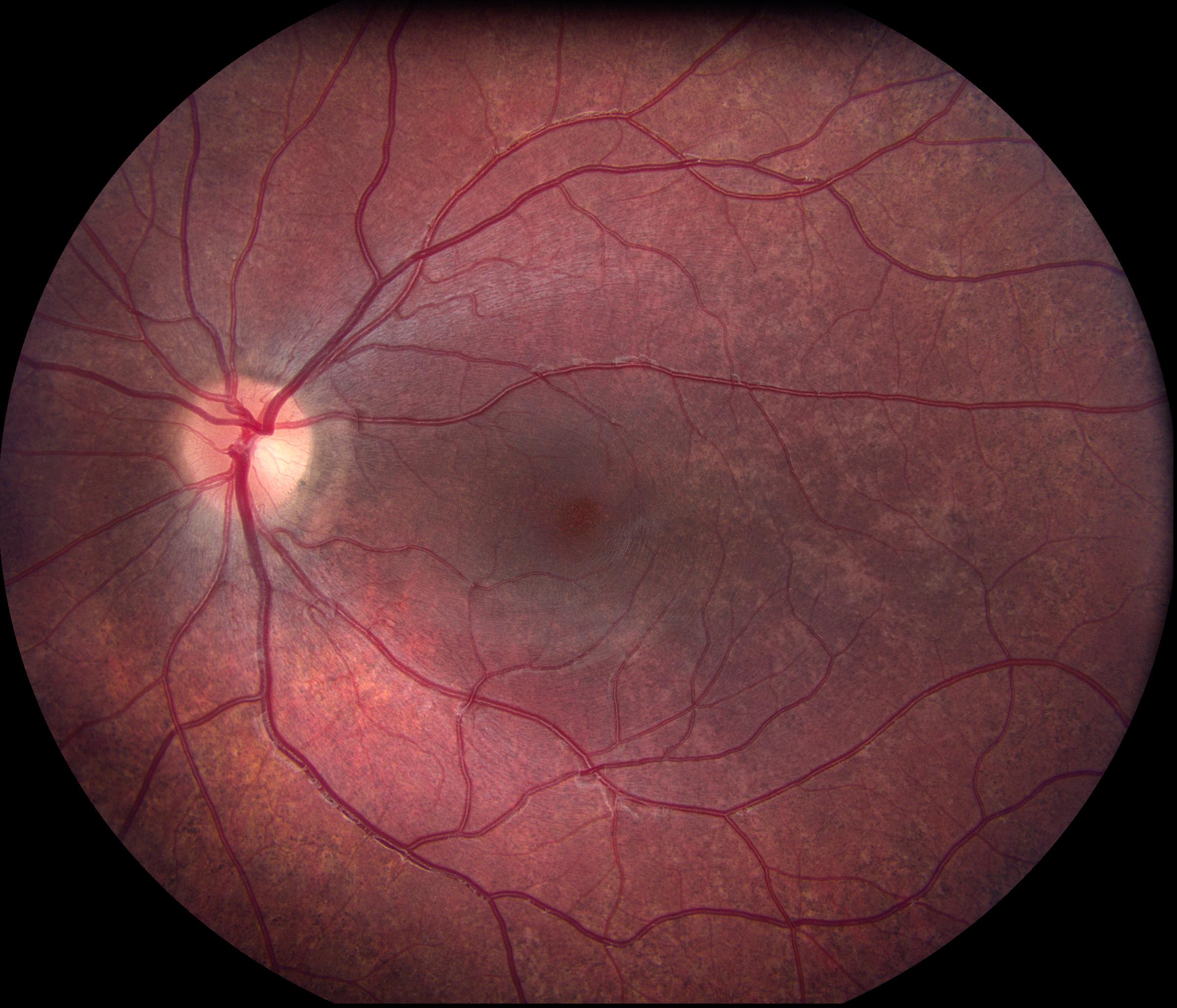Choroideremia Case Study
You are here!
The structure of a typical family affected with choroideremia is shown in figure 1.
A 42 year old woman has 9 children. She has 20/20 acuity in the right eye, 20/25 in the left eye and has a full visual field in both eyes. Examination of her retina reveals only very subtle pigment mottling in the macula and periphery Figure 2.
Her two daughters, aged 7 and 11, have more noticeable pigment mottling but both have 20/20 acuity and full visual fields (figures 3 and 4).

The woman has three affected sons aged 9, 13 and 14. The youngest of these appears only slightly more affected than his carrier sisters (figure 5) but there is more uniform pigment disruption caused by the absence of a normal copy of the CHM gene (which each of his sisters inherited from their father).
The 13 and 14 year old brothers are beginning to notice reduced night vision, reduced peripheral vision although their visual acuity remains 20/25. Characteristic features notable in their retinal photographs (figures 6 and 7) include healthy appearing optic nerves, relative preservation of the central retina (the macula), a relatively normal caliber of the retinal blood vessels (which is a distinguishing feature between choroideremia and retinitis pigmentosa – the latter condition typically exhibits very narrowed arterioles relatively early in the disease), and a progressively yellowish cast to the peripheral retina caused by the progressive loss of the choroidal blood vessels which gives the condition its name.
